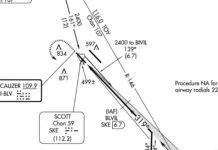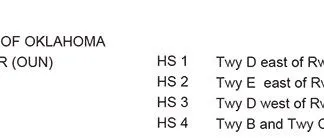If the FARs and the AIM comprise the bible of flying, the practical test standards (PTS) would be favored hymn books. But, just as the world’s religions occasionally modernize themselves, the FAA is getting ready to burn PTSes on the pyre in exchange for a completely new system.
The new system, known as the Airman Certification Standards (ACS), is a major overhaul of the certification process effecting every license and rating. Whether you’re thinking about adding to your ticket, are an instructor or you simply plan to get an IPC, it would behoove you to know a little about these changes before they arrive. The last thing you want is that deer-in-the-headlight look if the instructor asks you to review the pertinent ACS.
Status Quo
Any chat with student pilots quickly identifies deficiencies in the current certification system. Knowledge tests are a joke. They have little to do with actually flying an airplane. For but one example, let’s look at this test question:
A VOR receiver with normal five-dot course sensitivity shows a three-dot deflection at 30 NM from the station. The aircraft would be displaced approximately how far from the course centerline?
The answer is three nm. (One degree at 60 nm is one nautical mile, and each dot on the gauge is two degrees.) But, this no longer tests knowledge that’s useful or pertinent to most of today’s instrument flying. As one student put it, “Either correct the heading or adjust the OBS. Done. Wanna know how far you are off course? Just read the cross-track error on the GPS.”
Also the knowledge tests assess memorization, the lowest order of understanding. Many students take a written test before starting training. Once the test is completed, it gets little attention. An instructor is required to review missed questions before the checkride, but the codes associated with the test are too vague to be of any use. (For example, PLT116—Recall aircraft general knowledge / publications / AIM / navigational aids.)
The one part that works well is the PTS. It provides clear guidance for the oral and practical tests. Nonetheless, that’s being thrown out. It’s OK though. A group of academics, industry insiders, and bureaucrats (whose member groups make up an Acronym Mafia) are on the job to save us. Although it may seem like they are burning down the house to get rid of mice, the solution promises to improve the certification standards.
A Little History
The year was 2011 and someone within the FAA’s Airman Test Branch decided to update the knowledge tests. Developing, maintaining and validating the knowledge tests have often been troublesome for the government. They’d been releasing the whole question bank until a NASA study found the average response time was not even enough time to fully read the question. The first updated test to see daylight was the fundamentals of instruction for CFIs, and it went over like a serpent in holy water.
The pass rate percentage dropped from the high 90s to 70s. AOPA and the National Association of Flight instructors quickly insisted that “the knowledge test banks be reverted back to the questions in place prior to the recent update [and] that students who failed the exam since the changeover be allowed to retest and have the initial failure expunged from their record.” The degree of changes to the tests was so dramatic that past test scores, upon which knowledge prep courses are based, couldn’t predict performance on the new test.
The higher ups at the FAA held a conclave in DC and white smoke announced the formation of the Airman Testing Standards and Training Aviation Rulemaking Committee—yes, (and sorry), the ATST ARC. That committee provided nine recommendations to the feds, the three most important of which were 1) replace the PTS with the ACS; 2) create a group of industry stakeholders, subject matter experts and the FAA to oversee and review certification; and 3) release the knowledge test question bank and improvements to the knowledge test feedback for both the FAA and students.
Based upon those ATST ARC recommendations, the FAA created the Aviation Rulemaking Advisory Committee (ARAC). The Feds tasked that committee to implement the ATST ARC recommendations. To do this, the ARAC established the Airmen Testing Standard and Training Working Group, shortened (by them, not us) to ATSTWG. At last, the academics and regulators had finally introduced enough acronyms to get some work done.
The Power of the ACS
I was able to navigate the hieroglyphics of regulatory change and the news is good. Although complicated sounding, the ACS promises to clarify and streamline training, testing and currency.
The Acronym Mafia (ATST ARC, ARAC, ATSTWG) actually did recognize the value in the Practical Test Standards before they scrapped them. Simplistically, the new ACS is an updated PTS with knowledge test information added. The formatting and look will be very familiar. In fact, the ATSTWG wrote, “ACS Areas of Operation largely align with those in the existing PTS.”
So what’s the big deal? The power of the ACS is that unlike the PTS that provided guidance, according to the ATSTWG, the “ACS is intended to be a foundation for the entire airman certification testing and training system.” Therefore, testing and regulatory guidance—like handbooks, testing supplements, and even advisory circulars—will be aligned with the ACS.
This provides two advantages. First, it prevents written test questions being based on out of date documents. Second, written test results will be able to pinpoint where information about a missed question is located.
The Good Book
So the ACS will look very similar to the PTS. Unlike the PTS though, where half the tome is the introduction, the ACS intro will be short and sweet. As the ATSTWG noted, “the introductory material in today’s PTS documents undermines its effectiveness, because its length and complexity discourage the careful reading its content deserves.” The ACS will incorporate special emphasis areas, like risk management, into each task.
As mentioned, the areas of operation will be similar to current standards with the addition of a couple of elements. Each task will contain references, objectives and criteria for knowledge, skills and risk management. The risk management section is completely new. This means the FAA’s Risk Management Handbook is going to be essential reading. Every task is going to reference advice from this book.
The knowledge section combines the requirements for the written and oral examinations. Expectations of applicants are also clarified. For example, the current PTS indicates a pilot must exhibit “adequate knowledge of the elements related to holding procedures.” Kinda vague, eh?
The ACS knowledge section requires the pilot to understand the purpose of holding, reporting criteria, recommended entry procedures, wind corrections, autopilot use and minimum and emergency fuel. The skills section is what the student will perform in the airplane.
Next to each criteria item is a cryptic cipher that makes the Dewey Decimal System look elementary. Although complicated looking, it is actually pretty simple. The first letter indicates the rating or certificate, followed by the area of operation, task and then knowledge element. For example, the code assigned to knowing the purpose of holding is IR.III.B.K1 for instrument rating, area of operation three, task b, knowledge item one. Hey, I’m just the messenger.
This new system replaces the vague knowledge test learning codes currently used. When the ACS system is implemented, knowledge test results will contain these codes identifying where questions were missed. Additionally, the codes coordinate regulatory efforts. One of the advantages of the new system is coordination of FAA documents. The ACS is the conductor’s score. The codes are cues for handbook, learning supplements and advisory circular instruments.
The last section of the ACS is the appendices. These contain the info that was removed from the beginning of the PTSs and not incorporated into the area of operations. Topics include eligibility requirements, prerequisites and checklist usage. While the Acronym Mafia argued much of the information in the introduction of the PTS was skipped, they seem to have overlooked the contradiction of moving that information to the end of the book and putting it in an appendix. When was the last time you read an appendix?
End of Days
The demise of the PTS is upon us; it’s gasping its last breaths. Although many of the ACS documents are out for public comment or review, the concept and format are all but a done deal. This will mean a couple of changes even for pilots with an instrument rating.
Requirements for an instrument proficiency check (IPC) are in the new ACS. Only a couple changes—like adding preflight procedures that are not included in PTS IPC requirements—to required tasks were made. But, the ACS criteria include a more precise knowledge section and the new risk management portion. If you haven’t thought about the risk associated with holding, doing so before sitting down with the instructor might save some time and money.
Even if a pilot isn’t adding a certificate or rating, the ACS system will change training. From professional training organizations like Flight Safety to independent flight instructors operating from an airport restaurant, everyone is bound by the criteria in the new standards. The ACS represents a cultural shift by including risk management in every task. Like it or not, every pilot is going to have to be comfortable discussing risk management through the vernacular of the FAA’s Risk Management Handbook.
If a new rating or certificate is in your future, besides being able to discuss risk management, you should get ready for a much more difficult knowledge test. Much of the work surrounding the ACS involves improving the knowledge test. This is done using modern test-design techniques that are used by many professional groups and provide validated results. The knowledge test will require more than rote memorization.
Although often difficult and occasionally painful, change is inevitable. The change from our trusted PTS to the ACS does seem to be well intended and well executed with better and more meaningful training standards being the result. Being aware of the changes will keep you—so to speak—from reaching minimums without a runway in sight and no alternate.
On the surface, you might think of the ACS as just a reworked PTS that incorporates knowledge test material and risk management. Behind the scenes, though, the way pilots are certified is being completely revamped. Ultimately, this overhaul should do a better job of (according to the ATST ARC Report) “ensuring certificated airmen have the knowledge and skills to operate safely in the National Airspace System.” That should be a good thing, right?
Jordan Miller, a pilot for a major U.S. airline, spent too much time day dreaming about airplanes to retain religious teachings from parochial school. But, he does know how to wear a uniform.




